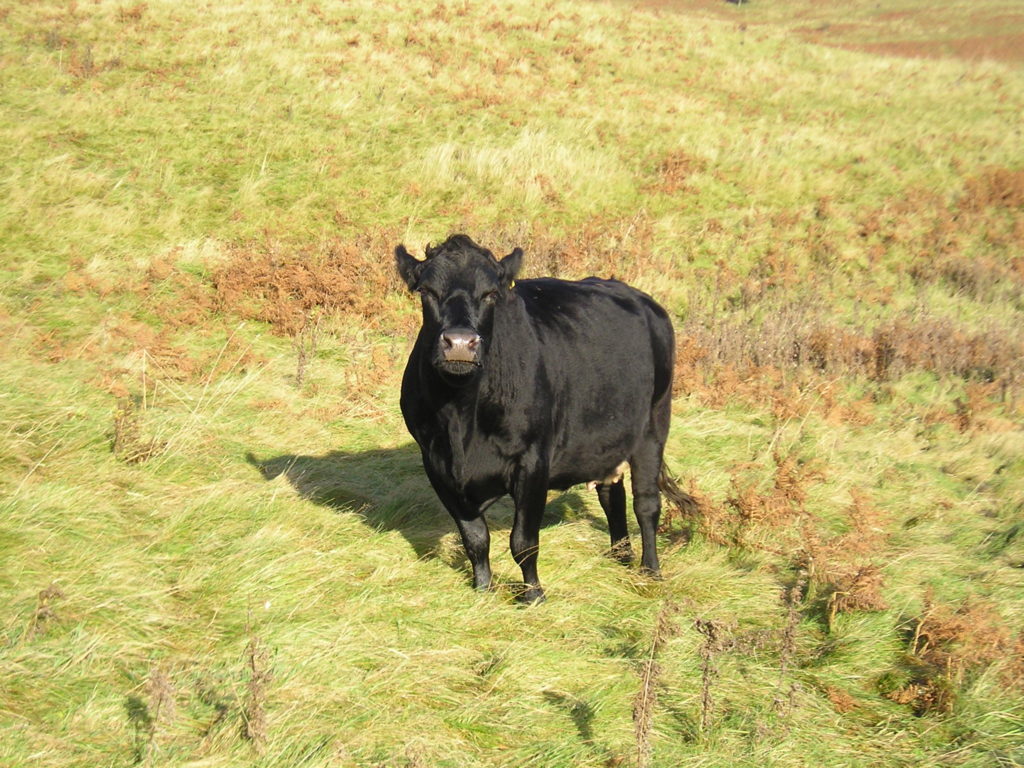Considerations For Outwintering Spring Calving Suckler Cows
26 November 2021Outwintering spring calving suckler cows has many advantages. It can reduce keeping costs, saving on bedding and feed if forage stocks are tight and free up shed space. It can also help manage body condition, especially if cows are fit going into the winter. However, careful management is required to ensure that cows do not lose too much condition before calving. Adverse weather is the biggest threat to the success of an outwintering system and can greatly impact on welfare, calving performance and subsequent fertility in the spring. While outwintering cows may be seen as an easier, labour-saving option, it is certainly not a low management system.
The main risks associated with outwintering include:
- Significant loss of body condition if not fed appropriately for the conditions or stocking rates are too high.
- Poor ground conditions and poaching especially if very wet, impacting on hoof health and risk of lameness.
- Higher chance of liver fluke due to extending the grazing season.
- Adverse weather conditions may mean it is difficult to access outwintering fields and get crucial supplies of forage bales/feed to cows if not stored nearby.
Body Condition
Energy requirements for outwintering cows can be as much as 10-20% more depending on weather conditions, available shelter and body condition score. While the lower critical temperature of a pregnant beef cow is thought to be as low as -14˚C in dry, still conditions, this can increase rapidly in wet and windy weather to as much as +14˚C, meaning that below this temperature, extra energy is required for the cow just to maintain herself.
A housed 700 kg spring calving cow three months from calving has a metabolisable energy (ME) requirement of around 89 MJ for maintenance and foetal/placental growth. However, if outwintered and conditions are unfavourable, she may require up to 107 MJ (20% more) to prevent any loss in condition. This is equivalent to the energy from 1.6 kg of dried barley or an extra 5 kg of silage at 35% dry matter and 10.5 ME.
The body condition score of outwintered cows should be monitored at least monthly. As cattle grow their winter coat, condition loss may not be easily noticed, especially in the early stages but it is important to keep a close eye on this as restoring condition in late pregnancy is virtually impossible to do. The risk for body condition loss is greater in cows carrying twins as they have significantly higher energy requirements compared to cows carrying a single calf. Any cows known to be carrying twins and any thin animals will be better off housed for the winter to enable them to maintain or gain condition if required. If calving at two years of age, first calvers pregnant with their second calf may want to be considered to be kept inside or given extra feeding if outwintered.
To ensure you are meeting the cows’ energy requirements, forage analysis and assessment of nutritional requirements by a qualified nutritionist is recommended. In addition, make sure stocking density is appropriate for the conditions, which may range from 1 cow to 1.5 – 3 hectares. Cows should be housed one month prior to the start of calving (dependent on weather conditions and body condition score). Any cows that are losing too much condition should be housed immediately.
Lameness
This can be a risk where conditions underfoot are very wet, which is often worse in areas around feed rings and water troughs. Stony and muddy parts of fields can cause damage to the sole of the hoof, as well as the skin above the hoof, allowing infectious organisms to invade the foot.
Fluke Risk
With cows outwintered on deferred grazing there may be an increased risk of fluke, especially if it is a relatively mild winter where the infective larval stages can still be present on grassland into December. Faecal sampling should be used to determine if treatment is necessary. Care must be taken to avoid product resistance from regular dosing with the same product and take advice from your vet on the appropriate product to use.
Other Considerations For Outwintering Cows Include:
- Soil type and suitability of fields.
- Cattle should not have to stand knee-deep in mud to access forage. Ideally forage should be fed on an elevated, well-drained area, with a solid base.
- Farm vehicles must have easy access to feeding areas.
- Shelter is important and can come from either trees, a high solid wall or an open fronted shed.
- Outwintering may be an attractive option for hill and upland farmers on deferred grazing. Whereas lowland farmers and those in drier areas with lighter soils (not clay-based) will be better suited to out-wintering cows on forage crops and brassicas.
- Breed of cow.
Lorna MacPherson, lorna.macpherson@sac.co.uk
Sign up to the FAS newsletter
Receive updates on news, events and publications from Scotland’s Farm Advisory Service

